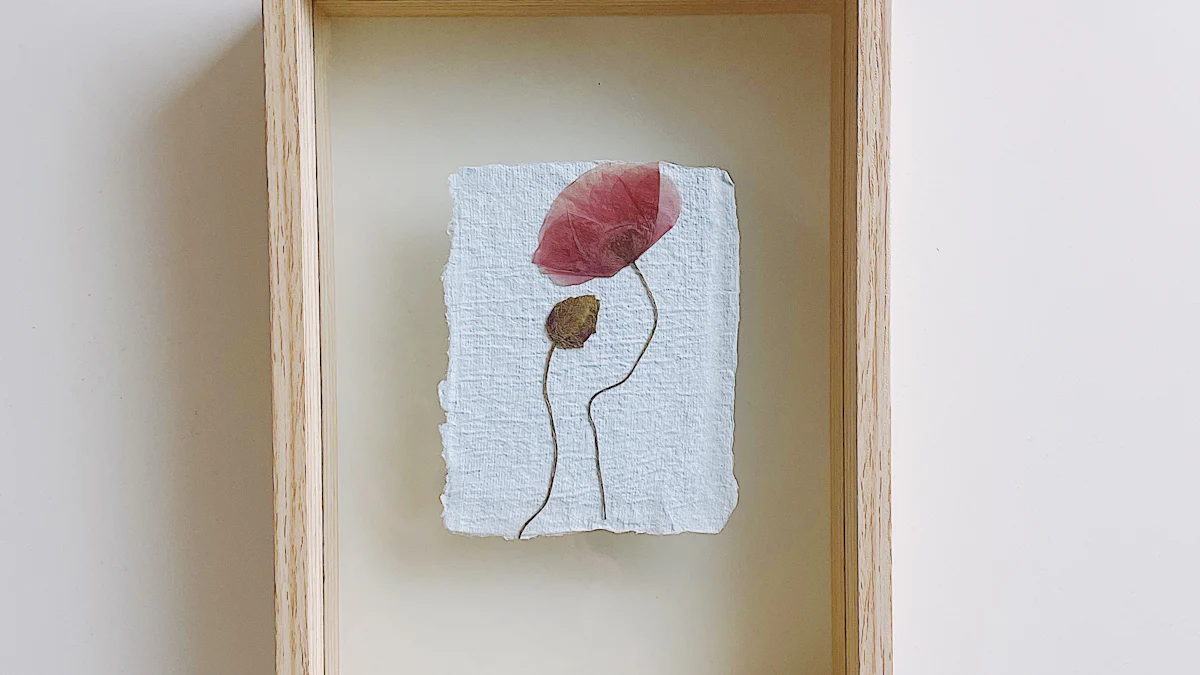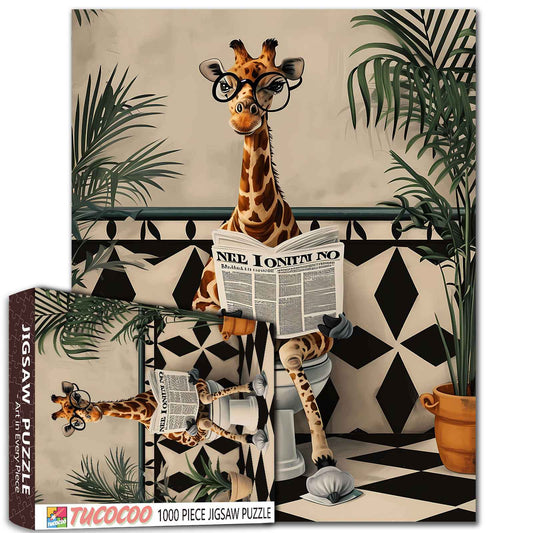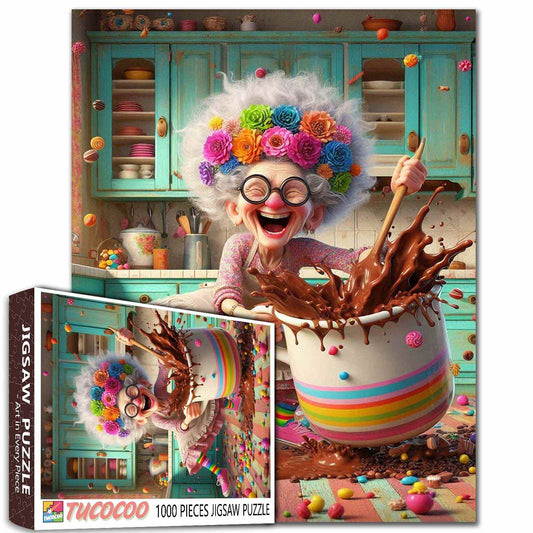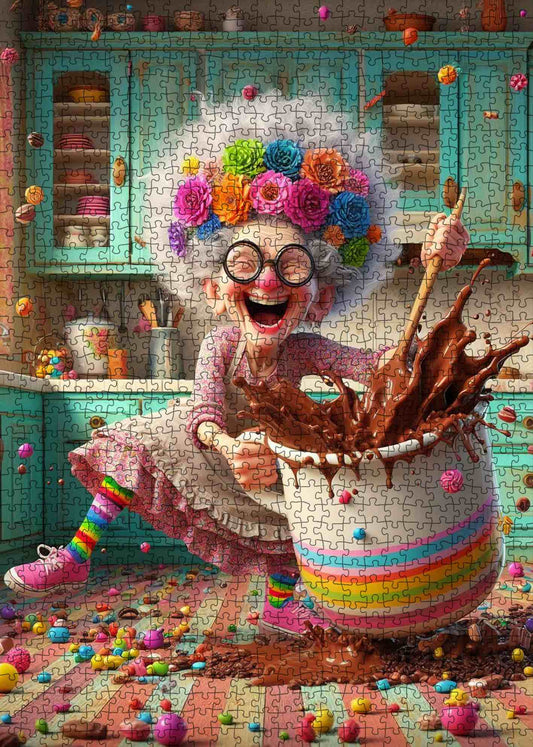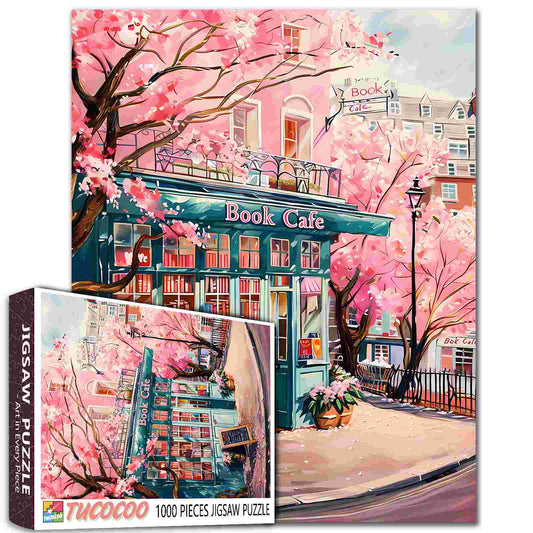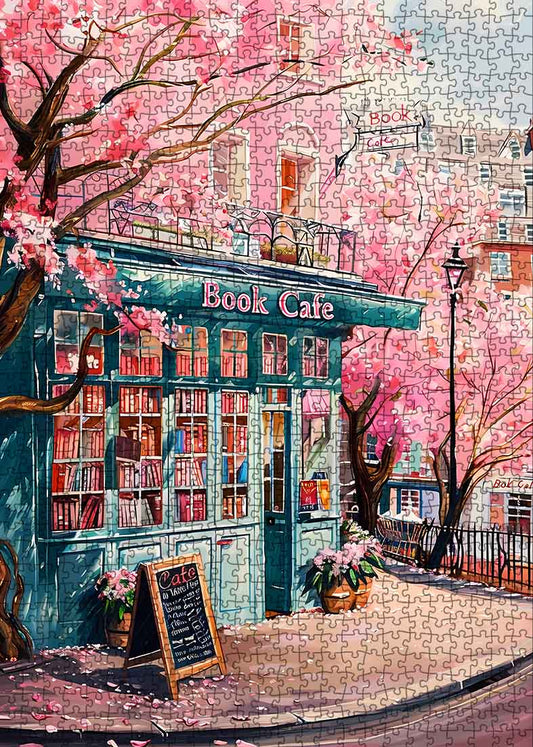
How To Frame a Jigsaw Puzzle
Completing a jigsaw puzzle feels like a true accomplishment. After spending hours piecing together a masterpiece, you might wonder how to frame a jigsaw puzzle to showcase your hard work. Framing your puzzle not only preserves the pieces but also transforms it into a lasting work of art. It’s a way to celebrate your effort and creativity while adding a personal touch to your home decor. Whether it’s a 500-piece or a 2000-piece puzzle, learning how to frame a jigsaw puzzle ensures your memory becomes a permanent and admired part of your space.
Key Takeaways
-
Gather essential materials like puzzle glue, a backing board, and a suitable frame to ensure a smooth framing process.
-
Secure your puzzle with glue or adhesive sheets to keep pieces intact before framing, allowing it to dry completely for best results.
-
Choose the right frame size and type, considering options like shadow box frames for depth or standard frames for a classic look.
-
Use glass or UV-resistant glass in your frame to protect your puzzle from dust and fading, enhancing its longevity.
-
Regularly maintain your framed puzzle by cleaning it and checking for dust or moisture to keep it looking fresh and vibrant.
-
Display your framed puzzle away from direct sunlight to prevent color fading, ensuring it remains a cherished piece of art.
Materials Needed to Frame a Puzzle
Framing a jigsaw puzzle requires a few essential tools and materials. Gathering these items beforehand ensures a smooth and enjoyable process. Let’s break down what you’ll need to get started.
Essential Tools and Supplies
Puzzle glue or adhesive sheets
To keep your puzzle intact, you’ll need a reliable adhesive. Puzzle glue is a popular choice because it seals the pieces together while adding a protective layer. Spread the glue evenly across the surface using a spatula or similar tool. If you prefer a mess-free option, adhesive sheets work just as well. These sheets stick to the back of the puzzle, holding everything securely in place.
Rolling pin or flat object for smoothing
A rolling pin or any flat, sturdy object helps ensure your puzzle lies perfectly flat before framing. Gently roll it over the surface to press down any uneven edges or raised pieces. This step is crucial for achieving a polished, professional look.
Backing board (foam board or cardboard)
A strong backing board provides support and stability for your puzzle. Foam board is an excellent choice because it’s lightweight yet durable. Cardboard works too if you’re looking for a budget-friendly alternative. Cut the board to match the exact dimensions of your puzzle for a snug fit.
Frame (with or without glass)
Choose a frame that complements your puzzle and fits its size. Frames with glass offer extra protection against dust and damage. If you opt for glass, consider UV-resistant glass to prevent fading over time. For a more casual look, a frameless option can also work.
Scissors or utility knife
You’ll need scissors or a utility knife to trim the backing board or adhesive sheets to the correct size. A sharp blade ensures clean, precise cuts, which are essential for a neat finish.
Optional: Hanging hardware
If you plan to display your framed puzzle on a wall, hanging hardware is a must. Many frames come with built-in hooks, but you can also purchase separate hardware for added security. Make sure the hardware is sturdy enough to support the weight of your framed puzzle.
Pro Tip: Some crafters recommend using mod podge as an alternative to puzzle glue. It’s versatile and easy to apply, making it a great option for beginners.
By gathering these materials, you’re setting yourself up for success. Each tool and supply plays a vital role in preserving your puzzle and turning it into a stunning piece of art.
How to Prepare a Puzzle for Framing
Preparing your puzzle for framing is an essential step to ensure it stays intact and looks professional. By following these steps, you’ll create a sturdy and polished piece of art ready for display.
Securing the Puzzle
To keep your puzzle pieces together, you’ll need to secure them properly. This step prevents any shifting or dislodging during the framing process.
-
Use puzzle glue or adhesive sheets: Apply puzzle glue across the surface of your completed puzzle. Spread it evenly with a spatula or similar tool to cover every piece. If you prefer a cleaner option, adhesive sheets are a great alternative. These sheets stick to the back of the puzzle, holding everything securely in place.
Expert Tip: According to professional framers, using an adhesive ensures your puzzle remains intact, even when hanging on the wall.
-
Let the glue dry completely: After applying the glue, allow it to dry thoroughly. This step is crucial to avoid smudges or uneven surfaces. Most glues take a few hours to dry, but it’s best to check the instructions on your product for exact timing.
Flattening and Drying
A flat puzzle is key to achieving a polished look. Any raised edges or uneven pieces can affect the final result.
-
Use a rolling pin: Gently roll a rolling pin or a flat object over the puzzle. This helps press down any raised pieces and ensures the surface is smooth. Take your time with this step to avoid damaging the puzzle.
-
Allow the puzzle to dry for 24 hours: Once flattened, let the puzzle sit for at least 24 hours. This drying period prevents warping and ensures the adhesive sets properly. Place the puzzle on a flat, clean surface during this time.
Pro Tip: Some crafters recommend using mod podge as an alternative to puzzle glue. It’s easy to apply and provides a strong seal for your puzzle.
Attaching the Backing Board
The backing board provides support and stability for your puzzle. It also makes it easier to place the puzzle into the frame.
-
Cut the backing board to size: Measure your puzzle and cut a foam board or cardboard to match its dimensions. Use a utility knife or scissors for precise cuts. A snug fit ensures the puzzle won’t shift inside the frame.
-
Secure the puzzle to the board: Apply glue or adhesive to the backing board, then carefully place the puzzle on top. Press down gently to ensure it sticks evenly. For added security, consider using framers tape, which is acid-free and won’t damage your puzzle over time.
Expert Advice: Mounting your puzzle on a backing material like foam board ensures it fits snugly within the frame and stays in place.
By following these steps, you’ll prepare your puzzle for framing like a pro. Each step plays a vital role in preserving your hard work and turning it into a stunning display piece.
How to Choose the Right Frame for a Puzzle
Choosing the right frame for your puzzle is an important step. The frame not only protects your work but also enhances its appearance. Let’s explore how to pick the perfect puzzle frame for your masterpiece.
Selecting the Right Frame Size
Start by measuring your puzzle. Use a ruler or tape measure to get the exact dimensions of the completed puzzle. Write down the width and height, and double-check your measurements to avoid mistakes. A frame that fits perfectly will keep your puzzle secure and prevent it from shifting.
If you can’t find a frame with the exact dimensions, consider custom framing. Many craft stores and online retailers offer custom options. While this may cost more, it ensures a flawless fit for your puzzle.
Quick Tip: Always measure your puzzle after securing it with glue or adhesive. This ensures the dimensions are accurate and accounts for any slight changes during the preparation process.
Frame Types to Consider
The type of frame you choose can change the overall look of your puzzle. Here are a few popular options to consider:
-
Shadow Box Frames: These frames add depth and create a 3D effect. They’re ideal for puzzles with intricate designs or raised textures. Shadow box frames also provide extra space, which can help if your puzzle is mounted on a thick backing board.
-
Standard Frames: A classic choice for most puzzles. These frames are flat and come in various sizes and styles. They work well for puzzles with a smooth surface and don’t require much additional space.
-
Custom Frames: If your puzzle has unique dimensions or you want a specific style, custom frames are the way to go. You can choose the material, color, and design to match your puzzle and home decor.
Each frame type offers its own benefits. Think about the style you want and how the frame will complement your puzzle.
Glass or No Glass?
Deciding whether to use glass in your frame depends on your preferences and needs. Both options have their advantages.
-
Frames with Glass: Glass protects your puzzle from dust, moisture, and accidental damage. It also gives the puzzle a polished, professional look. For added protection, consider UV-resistant glass to prevent fading from sunlight.
-
Frames without Glass: If you prefer a more casual or natural look, skip the glass. This option works well for puzzles with a matte finish or textured surface. Without glass, you can touch the puzzle directly, which some people find more personal.
Pro Tip: If you choose a frame with glass, clean it thoroughly before placing your puzzle inside. This ensures no smudges or dust interfere with the final display.
By carefully selecting the size, type, and glass option for your puzzle frame, you’ll create a display that highlights your hard work. The right frame not only preserves your puzzle but also turns it into a stunning piece of art.
Step-by-Step Guide to Frame a Puzzle
Placing the Puzzle in the Frame
Start by carefully placing your puzzle into the frame. Hold the puzzle securely by its backing board to avoid bending or damaging it. Align the edges of the puzzle with the frame’s borders. If your frame includes a mat, ensure the puzzle fits neatly within the mat’s opening. Take your time during this step to achieve a centered and polished look.
Quick Tip: If your puzzle feels fragile, consider sliding it onto a thin sheet of cardboard before transferring it into the frame. This can help prevent accidental damage.
Securing the Puzzle
Once the puzzle is in place, secure it using the frame’s clips or fasteners. Most frames come with built-in hardware designed to hold the backing board and puzzle firmly. Press each clip down gently but firmly to lock everything in place. If your frame doesn’t have built-in fasteners, you can use framers tape to secure the backing board. This ensures the puzzle stays stable, even if the frame is moved or hung on a wall.
Pro Tip: Double-check that the puzzle and backing board are snug before securing the frame. A loose fit can cause the puzzle to shift over time.
Adding Finishing Touches
Before displaying your framed puzzle, add some final touches to enhance its appearance. If your frame includes glass, clean it thoroughly with a lint-free cloth and glass cleaner. Remove any smudges, fingerprints, or dust to ensure a clear view of your puzzle. For frames without glass, gently wipe the puzzle’s surface with a soft, dry cloth to remove any debris.
Inspect the frame from all angles to confirm everything looks perfect. If you’re using hanging hardware, attach it securely to the back of the frame. Choose a sturdy hook or nail to hang your puzzle on the wall, ensuring it’s level and well-supported.
Expert Advice: Consider using UV-resistant glass or placing your framed puzzle away from direct sunlight. This helps protect the colors from fading over time.
By following these steps, you’ll know exactly how to frame a puzzle with confidence. Each step ensures your puzzle remains intact and beautifully displayed for years to come. Whether you’ve used puzzle glue, adhesive sheets, or even mod podge, your hard work will now shine as a stunning piece of art.
Tips for Preserving a Framed Puzzle
Protecting from Sunlight
Keeping your framed puzzle vibrant requires protecting it from sunlight. Direct sunlight can cause the colors to fade over time, diminishing the beauty of your masterpiece. Place your framed puzzle in a location away from windows or areas with strong sunlight. If you want to display it near natural light, consider using UV-resistant glass or acrylic for the frame.
Did You Know? UV-resistant glazing filters out harmful ultraviolet rays, reducing the risk of fading and preserving the puzzle's colors for years.
Dust and Moisture Protection
Dust and moisture can damage your framed puzzle if not properly addressed. A frame with a sealed back acts as a barrier, keeping out unwanted particles and humidity. This feature is especially important if you live in a humid environment. Sealing the back of the frame also prevents moisture from seeping in, which could lead to warping or discoloration.
For added protection, avoid hanging your puzzle in areas prone to high humidity, such as bathrooms or kitchens. Instead, choose a dry, well-ventilated space to maintain its condition.
Pro Tip: Acrylic sheets are a great alternative to glass. They are less likely to attract moisture and won’t stick to the puzzle over time.
Regular Maintenance
Maintaining your framed puzzle ensures it stays fresh and visually appealing. Periodically inspect the frame for dust, fingerprints, or smudges. Use a microfiber cloth to gently clean the surface of the glass or acrylic. For stubborn marks, apply a small amount of glass cleaner to the cloth—never directly on the frame—to avoid streaks.
If your frame doesn’t include glass, lightly dust the puzzle’s surface with a soft, dry cloth. This prevents dirt from settling into the crevices of the puzzle pieces.
Quick Tip: Regular cleaning not only keeps your puzzle looking great but also extends the life of the frame and its materials.
By following these tips, you’ll preserve your framed puzzle’s beauty and integrity. Whether it’s protecting it from sunlight, sealing it against dust and moisture, or performing regular maintenance, these steps ensure your hard work remains a cherished piece of art for years to come.
Framing your jigsaw puzzle is more than just a way to preserve it—it’s a chance to celebrate your creativity and hard work. By learning how to frame a jigsaw puzzle, you transform a relaxing and brain-boosting activity into a lasting piece of art. Displaying your framed puzzle not only enhances your space but also brings a sense of accomplishment every time you see it. So, grab your next puzzle, follow these steps, and enjoy turning your masterpiece into something truly special.
FAQ
Do you frame puzzles?
Yes, framing puzzles has become a popular way to preserve and showcase completed masterpieces. Many people, especially during the pandemic, turned to puzzles as a relaxing and rewarding activity. Framing your puzzle transforms it into a piece of art that you can proudly display in your home. Whether you’re a seasoned puzzler or just starting, framing puzzles is a great way to celebrate your hard work.
Can I frame a puzzle without using glue?
Absolutely! If you prefer not to use glue, adhesive sheets are a fantastic alternative. These sheets stick to the back of the puzzle, holding all the pieces together securely. They’re mess-free and easy to apply. Once the adhesive sheets are in place, you can mount the puzzle on a backing board and frame it as usual.
What type of frame works best for puzzles?
The best frame for your puzzle depends on your preferences and the puzzle’s size. Shadow box frames are great for adding depth, while standard frames offer a classic look. Custom frames are ideal if your puzzle has unique dimensions. If you want extra protection, choose a frame with glass, preferably UV-resistant, to prevent fading.
Do I need a backing board for my puzzle?
Yes, a backing board is essential for framing puzzles. It provides stability and ensures the puzzle stays flat inside the frame. Foam board is a popular choice because it’s lightweight and durable. Cardboard works too if you’re looking for a budget-friendly option. Make sure to cut the board to match the exact size of your puzzle for a snug fit.
How do I keep my framed puzzle from fading?
To prevent fading, avoid placing your framed puzzle in direct sunlight. UV rays can cause the colors to lose their vibrancy over time. Using UV-resistant glass in your frame adds an extra layer of protection. If you can’t avoid sunlight, consider displaying your puzzle in a shaded area or using curtains to block out harsh light.
Can I reuse a frame for a different puzzle?
Yes, you can reuse a frame, but it depends on how the puzzle was secured. If you used adhesive sheets or glue, removing the puzzle might damage the frame or backing board. However, if the puzzle wasn’t permanently attached, you can easily swap it out for a new one. Just ensure the new puzzle fits the frame’s dimensions.
How do I clean a framed puzzle?
Cleaning a framed puzzle is simple. For frames with glass, use a microfiber cloth and glass cleaner to remove smudges and dust. Avoid spraying cleaner directly on the glass to prevent streaks. For frames without glass, gently dust the puzzle’s surface with a soft, dry cloth. Regular maintenance keeps your framed puzzle looking fresh and vibrant.
Is it expensive to frame a puzzle?
The cost of framing puzzles varies based on the materials and frame type you choose. Standard frames and foam boards are budget-friendly options. Custom frames and UV-resistant glass may cost more but offer a tailored fit and added protection. You can also save money by doing the framing yourself instead of hiring a professional.
Can I hang a framed puzzle in a humid area?
It’s best to avoid hanging a framed puzzle in humid areas like bathrooms or kitchens. Humidity can cause the puzzle to warp or the adhesive to weaken. If you must display it in a humid space, use a frame with a sealed back to protect against moisture. Acrylic sheets instead of glass can also help reduce the risk of damage.
Why should I frame my puzzle?
Framing puzzles turns your hard work into a lasting piece of art. It preserves the puzzle, protects it from damage, and allows you to display it proudly. Framing also adds a personal touch to your home decor. Whether it’s a family project or a solo accomplishment, framing your puzzle makes it a cherished memory.


